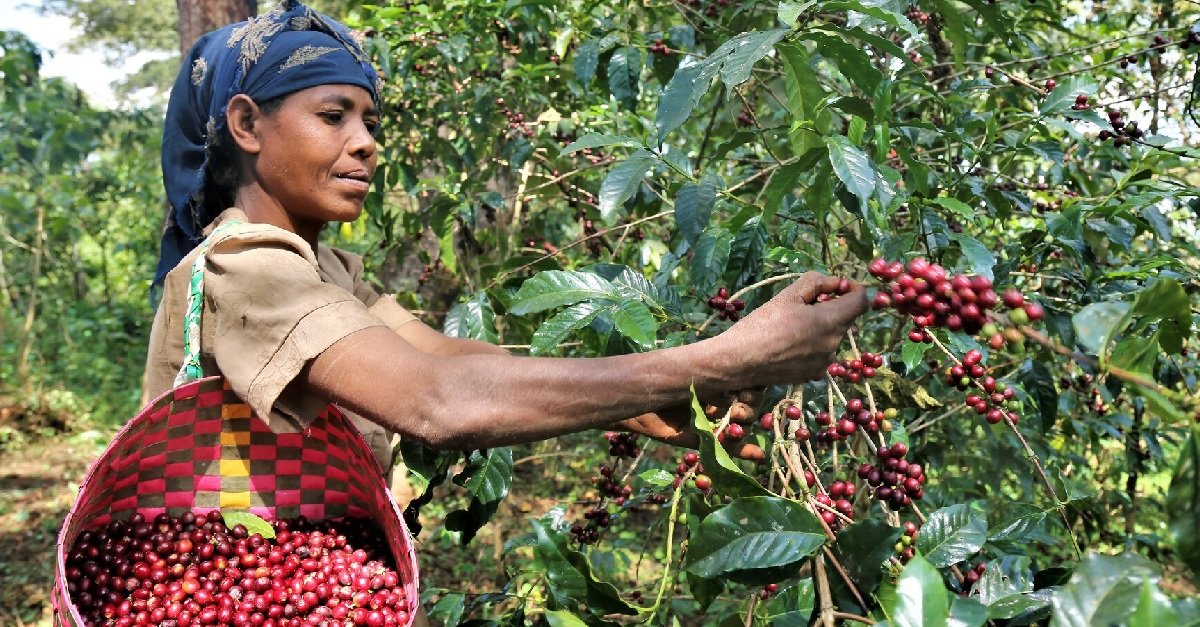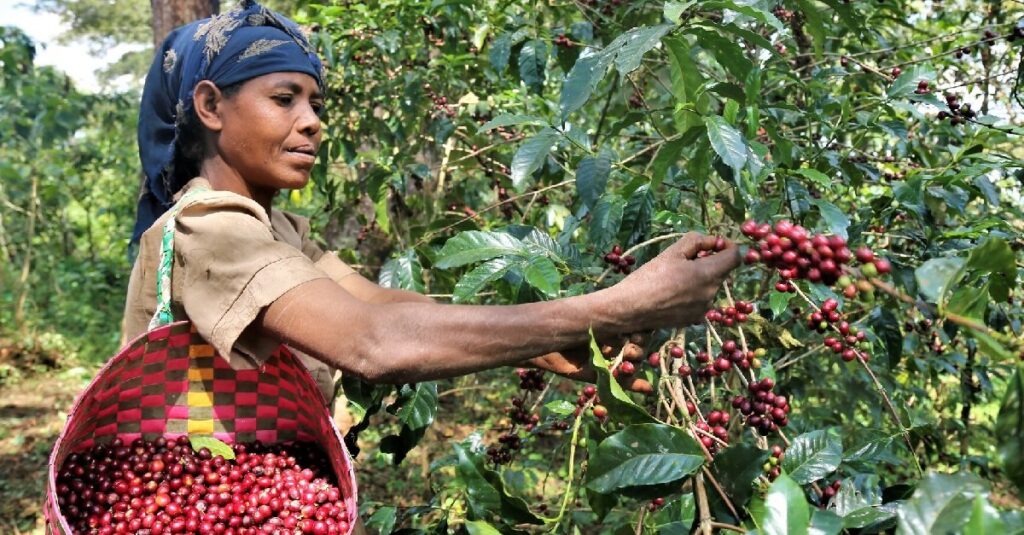I recently attended the https://www.highdensity.coffee/ conference organized by The Barista League (https://www.thebaristaleague.com/) and learned a lot. The topic that captured my attention was the asymmetry of power in the coffee supply chain and its impact on the farmers.
Now, being a keen student of business and finance, I had always wondered about the commodity prices like that of coffee.
The coffee price crisis has been a significant issue in recent years, and its impact in 2023 reflects both historical trends and new developments.
This is a broad and complex topic and I hope to cover various topics related to Coffee Prices and nuanced implications. In this article, I would like to explore coffee prices from a historical perspective.
Coffee Price History (1980-2023)
In 2001, the coffee crisis profoundly affected millions globally, especially in coffee-producing regions. The tragedy of 14 Mexican immigrants, including bankrupt coffee farmers, dying while trying to enter the US highlighted this crisis. It was a direct result of the collapse in coffee prices, which forced many farmers to abandon their lands. In Nicaragua, hundreds of coffee workers marched to protest the destruction of their livelihoods due to plummeting coffee prices.
However, many times in history coffee prices have collapsed and impacted the lives of farmers.

In Oct 2001, the price had plummeted as low as 42 cents/lb. However, there were many instances of coffee prices falling below $1.5/lb, which was considered to be the sustainable price for coffee production and the livelihood of farmers.
Various significant coffee price shocks in history have been influenced by a combination of factors, including environmental issues, political instability, market dynamics, and changes in consumer behavior. Here are some notable instances:
- Frost in Brazil (1975 and 1994)
- Brazil, being the world’s largest coffee producer, plays a crucial role in global coffee prices. In 1975 and again in 1994, severe frosts in Brazil significantly damaged coffee crops. These events led to a sharp decrease in supply and consequently caused a dramatic spike in global coffee prices.
- The Coffee Agreement Collapse (1989)
- The International Coffee Agreement (ICA), established in 1962, was an arrangement between coffee-producing and consuming countries to stabilize the market by controlling coffee prices and quotas. In 1989, this agreement collapsed, leading to the end of quota regulations. The result was a significant increase in coffee production, particularly in Vietnam and Indonesia, which led to a surplus and a subsequent dramatic fall in prices. This period is often referred to as the “coffee crisis” and had severe economic implications for coffee farmers, particularly in Latin America and Africa.
- Vietnam’s Rise as a Coffee Producer (1990s)
- Vietnam’s entry into the coffee market as a significant producer, particularly of Robusta coffee, in the 1990s, further contributed to the oversupply and the lowering of global coffee prices. This development intensified the impacts of the coffee crisis of the late 1980s and 1990s.
- Oversupply in the Market (2001)
- The coffee price shock of 2001 was primarily driven by a significant oversupply in the global market. This oversupply was partly a consequence of the collapse of the International Coffee Agreement in 1989, which had previously regulated coffee supply and helped stabilize prices. The absence of these controls led to an increase in production, particularly in countries like Vietnam and Brazil.
- US Financial Crisis (2008)
- The global financial crisis in 2008 had widespread economic impacts, including on commodity markets like coffee. Initially, prices fell due to a reduction in global demand. However, they later spiked, partly due to speculative trading in commodity markets and also as a response to a weaker US dollar (since coffee is priced in USD).
- Brazilian Drought (2014)
- In 2014, Brazil experienced a significant drought, affecting its coffee-growing regions. This environmental issue led to concerns about a shortfall in supply, causing a sharp increase in coffee prices in the global market.
- COVID-19 Pandemic (2020)
- The COVID-19 pandemic caused disruptions in the coffee supply chain, affecting both production and logistics. The initial impact was a drop in prices due to decreased demand as cafes and restaurants closed globally. However, there was also an increase in retail coffee purchases for home consumption. The pandemic highlighted the vulnerabilities and complexities of the global coffee supply chain.
Current State in 2023
As of 2023, the US, a major importer of coffee, faces rising coffee prices due to supply shocks. Brazil, a leading coffee producer, had its lowest harvest in four years in 2021, influenced by factors like La Niña, variable temperatures, and deforestation. Other major producers like Vietnam, Colombia, and Indonesia also faced challenges, including pandemic-related issues and political unrest.
Despite expectations of stabilization in the market, coffee prices remained high throughout 2023, influenced by the aftermath of weather disruptions in Brazil, low Colombian coffee yields, and a shortage of coffee laborers in Central America.
Global coffee production for the 2023/24 season is projected to be lower than expected, with reductions mainly in Colombia and Vietnam due to weather issues. Despite this, a balanced global supply is anticipated due to falling demand, especially in Europe and the United States.
“However, none of these prices take into account inflation, which makes matters worse for farmers
– Coffee analyst
Impact on Farmers
The price of unroasted green coffee has averaged less than $2 a pound for over 50 years. The price either remained flat or, by today’s standards, decreased.
This stagnation has led to a grim future for coffee producers, with many unwilling to continue farming due to inadequate financial returns.
Coffee is predominantly grown on around 12.5 million farms, with 95% being smaller than 5 hectares and 84% under 2 hectares. Smallholder farms, which produce up to 73% of all coffee, contrast with the larger estates found mainly in Central and South America. In 2019, Brazil and Vietnam together accounted for nearly half of the global coffee production, leading in Arabica and Robusta varieties, respectively.
There’s a notable production efficiency gap between countries like Brazil and Vietnam, which produce 1.5-2 metric tons per hectare, and other regions.
True, market economics creates an equilibrium price based on supply and demand characteristics. However, the fact that the supply side of the equation is so distributed, not standardized, and with variable efficiencies, it is difficult to control ‘supply’ like oil cartels invariably creating imbalance and periods of potential oversupply!
Furthermore, Coffee is traded on the global commodities market at a generic price (the C price), which does not consider the specifics of where it’s grown or the labor involved. This system disproportionately affects smallholder farmers, who make up to 90% of all coffee producers, as they typically produce small volumes unsuitable for bulk trading.
Efforts like the Sustainable Coffee Buyers Guide have been introduced to encourage buyers to consider the real costs and value of coffee, hoping to shift buyer mindsets towards more sustainable and equitable pricing practices.
Case in Point: Ethiopian Farmer Impact Study
This research on Ethiopian coffee farmers provides insightful information on how changes in coffee prices affect these farmers and their communities.

- Impact on Household Consumption: A decrease in international coffee prices significantly affects the consumption of households that primarily rely on coffee production. It is a no-brainer that it directly influences the economic well-being of coffee-producing families.
- Changes in Labor Supply: Lower coffee prices lead to a decrease in on-farm labor supply, particularly among male workers. This situation often results in a reallocation of labor towards non-coffee agricultural fields, indicating a shift in work patterns due to changing economic circumstances.
- Effect on Child Malnutrition: One of the most concerning impacts of low coffee prices is on child health. The study found that children born in coffee-producing households during periods of low coffee prices exhibit lower weight-to-age and weight-to-height z-scores compared to children from non-coffee households. This indicates a direct link between coffee price fluctuations and child malnutrition, highlighting the broader social and health implications of commodity price volatility
The Pass-Through of International Commodity Price Shocks to Producers’ Welfare Evidence from Ethiopian Coffee Farmers, Hundanol A. Kebede (Published 2021)
Conclusion
In this article, I attempt to highlight the significant impact of coffee price fluctuations on producers, especially those in developing countries. It details historical events that have affected coffee prices and the challenges faced by smallholder farms, (impact on farmers) which are predominant in coffee production. I believe it underscores the need for sustainable and equitable pricing practices in the coffee industry, recognizing the real costs and value of coffee production.
Sources and Other Related Articles
- https://www.bls.gov/opub/btn/volume-12/historic-coffee-prices-percolated-after-a-bitter-global-supply-crisis.htm
- https://www.bloomberg.com/news/articles/2023-07-07/coffee-prices-will-start-to-get-cheaper-next-year-roaster-says
- https://dripbeans.com/coffee-price-history/
- https://www.drinktrade.com/blog/education/why-coffee-price-increase
- https://conversableeconomist.com/2023/09/22/rising-coffee-prices-a-story-of-supply-shocks/

